It seems that every year around this time, school districts around the country report not being able to fill all of their open teacher vacancies. Why do these cyclical teacher shortages occur? In this episode of the podcast, we will explore this topic in-depth.
The Edvocate Podcast, Episode 2: How Edtech Companies Should Start the New School Year
As summer reaches its peak, and fall gears up to make its arrival, students, parents, teachers, and administrators are all preparing for the beginning of a new academic year. So many gains were made last year, and they are eager to build upon that success. When we talk about education stakeholders who are concerned with starting the school year off right, we rarely, if ever, talk about edtech companies. They too are an integral part of the school community, as they provide a valuable service.
So how do edtech companies stay on their “A” games to begin the new school year? Not to worry, we have you covered.
Hello, my name is Dr. Matthew Lynch and welcome to the second episode of The Edvocate Podcast. Today, we will discuss back to school tips that will help your edtech company get off to a running start and sustain that momentum until summer break comes around again.
The Edvocate Podcast, Episode 1: 8 Attributes of Successful Digital Age Teachers
Regardless of where you go in the world, teachers are the backbone of the education system. Without quality teachers, school districts cannot provide students with the skills that they need to be successful academically. Without teachers, the next generation will not be able to compete in the global economy. These are sureties, and you will find few people who would disagree.
If you have been studying the field of education closely, as we have, you know that it is undergoing a metamorphosis. Students no longer respond to the teacher-centered pedagogy that our forefathers did. No, today’s students are immersed in a technologically advanced world and possess attention spans that last only a few seconds.
Because of this, today’s teacher needs to add a new skill set to their repertoire to be successful. In this today’s podcast, we will discuss the 8 key attributes that successful digital age teachers possess.
Introducing The Edvocate Podcast
For over 15 years, veteran educator Matthew Lynch has written about and researched the field of education. On “The Edvocate Podcast,” he discusses education trends, issues, and futures. To join him on this journey, click the subscribe button so you can be alerted when the first episode goes live.
What’s Happening in the Brain of a Multi-Lingual Child?
Have you ever considered what might be going in the mind of someone who happens to be multilingual? Modern research continues to point to the fact that individuals who speak more than one language have a tremendous advantage. The brain becomes permanently shaped and influenced by the addition of an extra language, but is that where it stops?
It turns out that there may be more going on inside the mind of a multilingual child than we initially imagined. Researchers are now finding that there are a few hidden benefits for kids who can speak more than their own mother tongue. If you’ve been wondering whether a foreign language class could help your child, take a look at these primary benefits of being bilingual.
Improved Executive Function
If you can speak in more than one language, you have to consistently make a choice regarding which one is appropriate to use at any given time. The choice represents a small form of self-control as you select the correct language and consciously choose to ignore the other. This subtle decision-making process has been shown to improve executive functioning in children.
The development of language can help to promote faster cognitive development in children, particularly where it relates to executive functioning. They may exhibit more self-control and the ability to better regulate themselves when they have two languages at their disposal.
Better Test Scores
It may be surprising for you to learn that multilingual children tend to have higher test scores than their English-speaking only counterparts. Those students that continue to actively refine both languages in an educational setting tend to perform better and have higher reading levels. According to one study on this phenomenon, dual-language students often performed one full grade level higher by the end of middle school compared to English-only peers.
More Empathy
Students who speak more than one language often develop a better sense of empathy toward others. A bilingual student has more opportunity to interact with people who may be from a different walk of life. They can imagine what it’s like to live in a world where someone else doesn’t understand the language. Because of their own improved executive functioning, they can even switch gears to use the other language appropriately.
Students that consistently interact with others who are different from them are shaping what the world around them looks like. As a result, their worldview expands tremendously and true diversity is born. This is even beneficial for those who need the multilingual child’s translating abilities. They could feel more included in the community when they have someone else to connect with.
Speaking multiple languages gives children a major advantage over their peers. Inside their brains, so many different tasks are taking place that concretely changes the pattern of their behavior. While the exact benefits aren’t always measurable, there’s no denying that learning a foreign language is a worthwhile pursuit.
The Edvocate’s 2018 EdTech 20: A Ranking of 20 Global Edtech Influencers
Who are the biggest edtech influencers in the world? The Edvocate editorial team has exhaustively researched the movers and shakers of edtech and selected 20 global influencers. To frame our methodology, we decided to define edtech influencer broadly. On this list, you will find administrators, bloggers, journalists, policymakers, researchers, innovators, businessmen, activists, etc. who are transforming the edtech space as we know it.
The influencers that we chose are all active in the area of edtech, doing something influential in 2018, well-known throughout the edtech landscape, and making an impact globally. We are excited to witness how these influencers continue to change the world this year, and we are anxious to see who will stand on the shoulders of these giants, and as a result, make our list next year. Without further ado, here is The Edvocate’s 2018 EdTech 20: A Ranking of 20 Global Edtech Influencers.
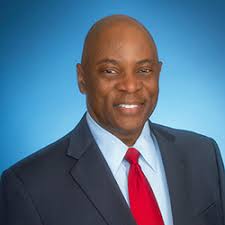
CEO and Chairman of the Board of Directors at K12
What His Current Focus Is: Mr. Davis is the CEO of K12, a technology-based education company and leading provider of online curriculum and school programs for students in pre-K through high school. As CEO and Chairman, he focuses on strengthening the K12 organization, its operations, and its academic programs. He is the person responsible for K12’s meteoric rise over the last decade.
How He’s Transforming the EdTech Space: Under his helm, K12 is driving innovation and advancing the quality of education by delivering state-of-the-art, digital learning platforms and technology to students and school districts across the globe. K12’s curriculum serves over 2,000 schools and school districts and has delivered millions of courses over the past decade. K12 is a company of educators providing online and blended education solutions to charter schools, public school districts, private schools, and directly to families. The K12 program is offered through more than 70 partner public schools and school districts and public and private schools serving students in all 50 states and more than 100 countries.
What His Background Is: Mr. Davis received an MBA from the Wharton School of the University of Pennsylvania, an MS in Engineering Computer Science at the Moore School of the University of Pennsylvania, and a BS in Engineering from Stevens Institute of Technology.
What May Surprise You About Him: With a personal passion for serving children and helping them achieve higher levels of success, Mr. Davis founded the JANDT Foundation to aid minority children in attending private and parochial schools in the Washington, DC area.
Twitter: @K12bloggED
Email: N/A
2. Sal Khan

Founder and Executive Director of Khan Academy
What His Current Focus Is: Sal Kahn is an American educator who has founded both an online education platform called the Khan Academy, as well as a physical school, the Khan Lab School. The Khan Academy is a free service that offers over 6500 video lessons on a range of topics and subjects, through primarily focused on math and science. The Khan Academy’s YouTube page has more than 2.9 million subscribers.
How He’s Transforming the EdTech Space: Khan’s goal is to reach as many students as possible, regardless of resources, and so his mission is to make his lessons accessible and free. Kahn’s videos, therefore, have become vital educational resources for rural African and Asian students.
What His Background Is: Kahn graduated from MIT with a Bachelor’s of Science in math, electrical engineering, and computer sciences; he then earned an MBA from Harvard. Kahn worked hedge fund analyst. As his online tutoring and education videos gained popularity, he quit his hedge fund position in 2009 to shift his focus to crafting and developing his online education endeavors.
What May Surprise You About Him: The Khan Academy began as a way for Kahn to tutor his cousin long-distance.
Twitter: @khanacademy
Email: [email protected]
 Principal Product Manager on the #MicrosoftEDU Team
Principal Product Manager on the #MicrosoftEDU Team
What His Current Focus Is: Mike Tholfsen is the Principal Product Manager on the Microsoft Education team. He mainly focuses on OneNote Class and Staff Notebooks, Learning Tools and Microsoft Teams. He has spent over 20 years at Microsoft, helping to shape their education division. Mike works with educators and pupils from all over the world to create products that improve student outcomes. He works tirelessly to promote Microsoft Education and their products. This has resulted in an increased share of the edtech market for Microsoft.
How He’s Transforming the EdTech Space: Mike is transforming the edtech space by creating products that 1. Help teachers maximize their productivity; 2. Level the playing field for students from minority groups and those that have special needs; and lastly 3. Take advantage of the power and promise of personalized learning and artificial intelligence.
What His Background Is: Mike has a B.S. in Information Systems from the University of Washington. Although he does not have a background in education, he has worked hard to come up to speed. He has a firm grasp on the intersection of education and technology, as evidenced by the wonderful products that have been released under his watch.
What May Surprise You About Him: Mike’s favorite book is The Fourth Turning, by William Strauss and Neil Howe.
Twitter: @mtholfsen
Email: [email protected]
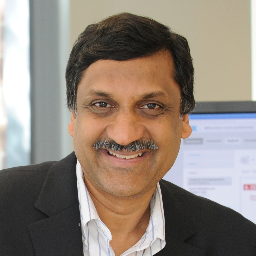
Founder and CEO of edX
What His Current Focus Is: Professor Anant Agarwal is currently a professor of Electrical Engineering and Computer Science at the Massachusetts Institute of Technology. He is also one of the founders and the CEO of edX, a MOOC (massive online open course forum) and non-profit organization. He created and taught the first edX course – one on circuits and electronics – which boasts an enrollment of over 155,000 students from over 160 countries across the world. In addition to his work at MIT and on edX, Anant hacks on an online circuit’s lab called WebSim in his free time.
How He’s Transforming the EdTech Space: Anant has long been an outspoken advocate of MOOCs, which strive to make education accessible to learners at low or no cost, worldwide. edX draws courses from the nation’s – and the world’s – leading educational institutions. They offer many free courses, and students can choose to pay a fee for a certificate. These fees help continue to fund free classes.
What His Background Is: Anant was born in Mangalore, India in 1959. He studied at St. Aloysius Mangalore, the Indian Institute of Technology Madras, and received his Ph.D. in Electrical Engineering from Stanford University. In addition to edX, Anant has worked on various engineering and computer technology endeavors including Sparcle, Alewife, Virtual Wires, LOUD, Oxygen, and Fugu.
What May Surprise You About Him: According to an interview on Life Hacker, Anant admits to having dabbled in standup comedy in college. He finds humor to be an essential quality of a strong leader.
Twitter: @agarwaledu
Email: [email protected]
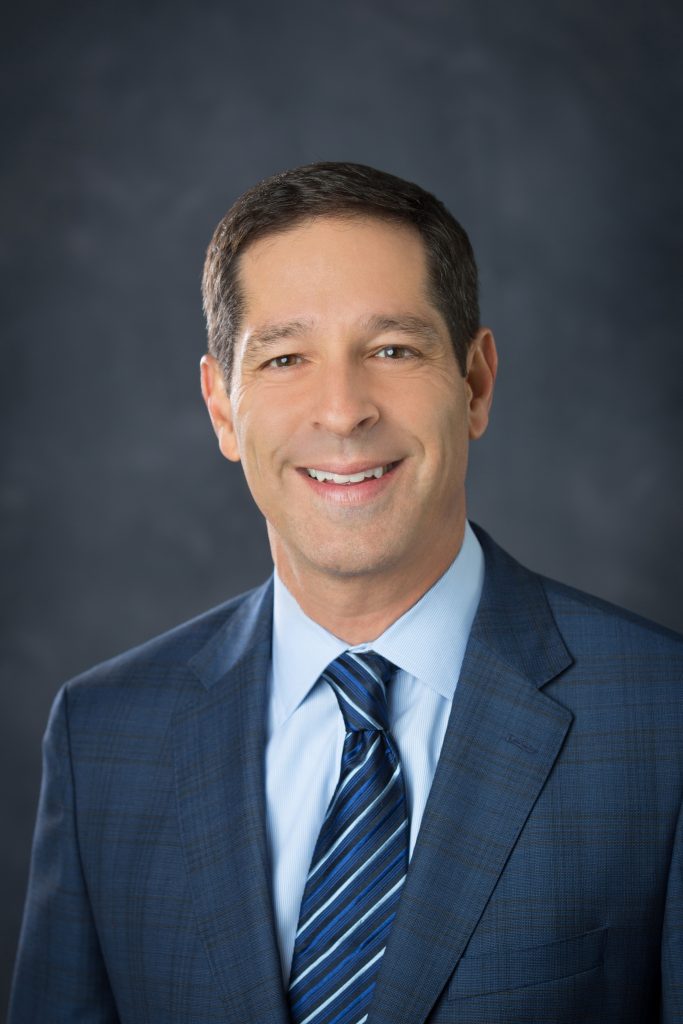 CEO of Renaissance
CEO of Renaissance
What His Current Focus Is: Daniel is focused on building an organization that delivers powerful student growth data and insights. He believes actionable data is key to personalized learning, and this data is at the heart of Renaissance solutions. Educators can use assessments to understand what each student has mastered, and then place students into the right level of instructional curriculum. Renaissance is also increasing equity and access through its recent acquisition of myON, a provider of digital literacy solutions. By adding myON, Renaissance provides students with unlimited access to more than 13,000 digital books.
How He’s Transforming the EdTech Space: Daniel and team have launched Renaissance Flow 360, a solution that drives personalized learning by bridging assessment to instruction. It improves learning outcomes for every student, and provides centralized data on student mastery across multiple educational resources, including the top educational vendors.
What His Background Is: Daniel has nearly 20 years of experience in education. Prior to joining Renaissance in 2017, he was CEO of Adtalem Global Education (formerly DeVry Education), a global provider of educational services. He led Adtalem from 2006 through 2016 and drove its transformation from a domestic, single university to an industry-leading institution serving students around the world and across multiple disciplines.
What May Surprise You About Him: Daniel was brought up in a family that highly valued education, especially varied educational experiences. In fact, their rule was, “You can go to any college you want, as long as it’s Michigan.”
LinkedIn: https://www.linkedin.com/in/dmhamburger18/
Email: [email protected]
6. Bill Latham
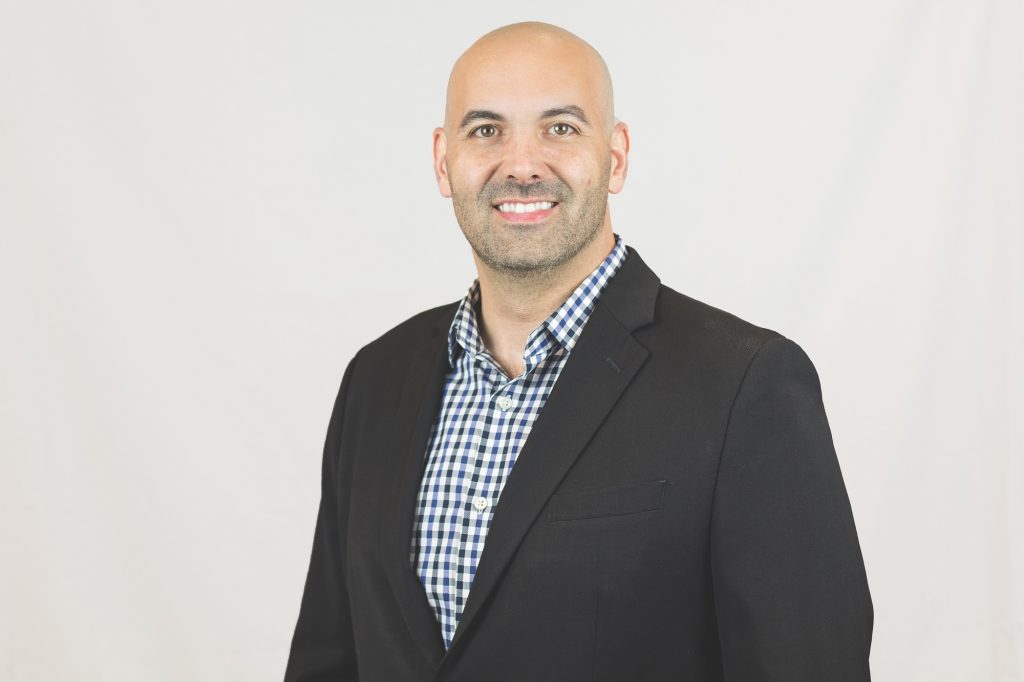 CEO, MeTEOR Education
CEO, MeTEOR Education
What His Current Focus Is: Bill Latham is CEO and senior program designer at MeTEOR Education, a company that inspires and supports communities and their students in creating transformational learning experiences. Focused on the strong interplay between pedagogy and support spaces, Latham is a leading global advocate for the constant, consistent support of best-practice instruction through living classroom environments. He and his team’s designs have led to measurable increases in basic literacy, collaborative learning, and complexity of student tasks at all grade levels. Latham is connected with leading global researchers and academics in the field, employing the latest best practice findings as he leads design work for classrooms, school buildings, and broader school systems.
How He’s Transforming the EdTech Space: Bill is a leader in the design and implementation of holistic, high-impact learning experiences and environments, he has consulted with schools, districts, and governmental agencies across the Western Hemisphere on the design, outfitting and implementation of classroom and school environments aligned to critical learning priorities for more than 15 years. He and his team have directly served more than 1,000 schools in the United States alone. Latham is an architect of the human engagement by design methodology. He focuses on the integration of foundational engagement frameworks, technology, furnishings, and space to drive specific-learning 21st Century college and career-ready outcomes. He is the co-author of the book Humanizing the Education Machine: How to Create Schools That Turn Disengaged Kids Into Inspired Learners (Wiley; November 7, 2016).
What His Background Is: Bill holds a B.S. degree in Chemistry and an MBA from the University of Florida.
What May Surprise You About Him: He is active in martial arts and competes at a national level.
Twitter: @BillLatham3
Email: [email protected]
7. Arne Bergby
 CEO of itslearning
CEO of itslearning
His Current Focus: Arne joined itslearning in 2004. Passionate about education and helping students and teachers succeed, he has led itslearning to be Europe’s largest provider of educational learning platforms. As CEO, his focus is on making the student-centered teaching and learning platform the ideal one stop shop for creating and delivering courses and assessments, managing standards-aligned content, enabling communication and collaboration for teachers, parents and students, and more.
Put another way, itslearning strives to remain at the heart of education. Under Arne’s leadership itslearning continues to gain market share in the United States as it partners with Houston (TX) Independent School District, Forsyth County (GA) Schools, Fort Worth (TX) Independent School District, Metropolitan School District of Wayne Township (IN) and San Bernardino (CA) City Unified School District – to name just a few. Designed for teachers and how they want to teach, itslearning is a cloud-based learning platform used by millions of teachers, students, administrators and parents around the world. It can be found at all levels of education, from primary schools to universities, helping teachers make education more inspiring and valuable for today’s students.
How He’s Transforming the EdTech Space: Arne is working to transform the education space by overseeing the continuous improvement and rise of itslearning as one of the world’s most robust and popular learning management systems. itslearning has over seven million active users worldwide, mainly in the United States, Norway, Sweden, Denmark, the Netherlands, the United Kingdom, France, and Germany. Made for today’s classroom, itslearning is one of the most innovative products in the global education sector.
His Background: Previously, Arne served as managing director of Tieto, one of the largest ICT companies in Europe. Arne received a Master of Management degree from the Norwegian Business School in 1987. He is a member of the Educational Consultants Network, K-12 Assistive Technology Professionals, and is on the Board of Directors of G.C. Rieber.
What May Surprise You About Him:
He’s fiercely competitive. Whatever your game — skiing, running, even cooking — he’s always up for good-natured competition.
Twitter: @ArneBergby
Email: [email protected]
8. Todd Brekhus

President of myON at Renaissance Learning
What His Current Focus Is: Todd believes that literacy, student choice, and personalized learning are the three keys to transforming learning for all students. myON’s expansive digital content library and literacy tools, paired with Renaissance’s complementary reading practice and assessment offerings, enables the company to deliver a comprehensive, innovative suite of reading solutions to educators and students worldwide. Todd and his team work to inspire the love of reading and learning by leveling the playing field with unlimited access to books. He is a lifelong advocate of reading and literacy.
How He’s Transforming the EdTech Space: Through myON’s literacy ecosystem, Todd and his team offer more than 4 million students instant and unlimited access to more than 13,000 enhanced digital books and daily news articles, real-time assessments, and close reading tools.
What His Background Is: As the President of myON at Renaissance Learning, Todd is focused on product development and providing educators tools to create a personalized learning environment. Before joining the edtech business community, he spent eight years in education as a teacher, department chair, and technology director. He has led successful edtech companies including Capstone Digital, PLATO Learning, Learning Elements, and MCI WorldCom, where he helped develop and implement the Marco Polo program.
What May Surprise You About Him: In high school, Todd was a competitive slalom ski racer.
Twitter: @ToddBrekhus
Email: [email protected]
9. Jay King
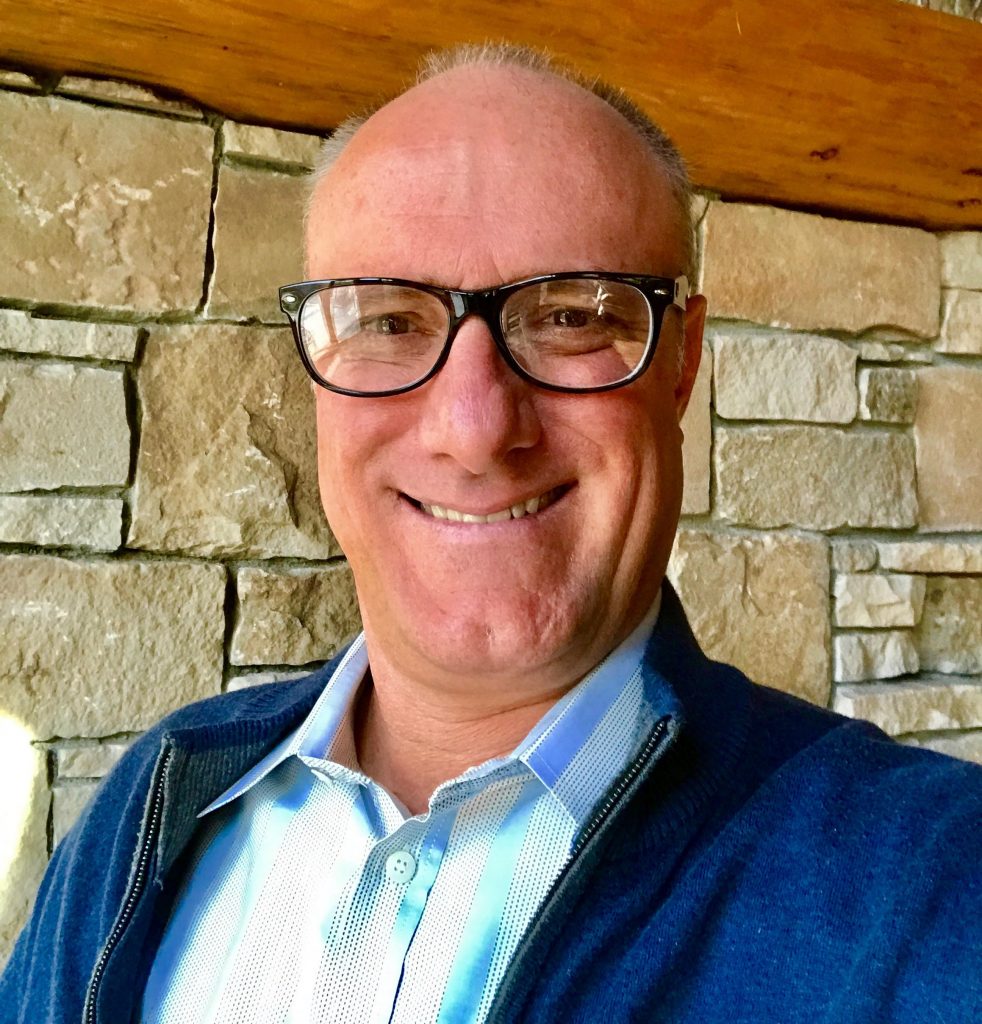 COO of StudySync®
COO of StudySync®
What His Current Focus Is: Jay is presently focused on serving as the COO of StudySync. Over the past year, Jay has traveled to several districts throughout California, Illinois, and Arizona to meet and learn from StudySync users, including districts in Geneva, Elgin, Huntley, St. Helena, Paradise Valley, and more. Recently, Jay has been instrumental in bringing StudySync’s new production studio to Petaluma, CA, his hometown. As a product of the Petaluma public school education, Jay believes that Petaluma encompasses a small-town culture, with strong community values, which are common throughout the U.S. and indicative of how K-12 education can have such a positive impact on society. The studio will be the site where several media productions are created, including StudySync® TV.
How He’s Transforming the EdTech Space: In 2009, Jay co-founded StudySync with StudySync’s CEO, Robert Romano. Their vision was to leverage technology and social learning to engage students in the great works of literature. As one of the nation’s most highly regarded literacy curriculums, StudySync provides these digitally-connected students with media-rich learning experiences, real-world topics, and a direct read-write connection, while giving teachers flexible digital tools and engaging print resources supporting teaching, differentiation, and standards-based assessment. In 2013 StudySync partnered with McGraw-Hill Education to exclusively distribute StudySync in the k – 12 market. The product has also received numerous prestigious awards including the coveted Innovation Award from the Association of Educational Publishers (AEP).
What His Background Is: Previously, Jay co-founded EdVantage Software, also with Robert Romano, and led the development of several award-winning products. After its acquisition of EdVantage, Jay led Riverdeep’s web development team, winning the prestigious CODiE award. With StudySync, Jay has led the development of StudySync’s ELA and SyncBlast products, which have gained wide acceptance and accolades. Jay has an M.S. in Accounting from Santa Clara University.
What May Surprise You About Him: Jay is a certified sports fanatic. He is probably watching ESPN right now.
Twitter: @johnjking
Email: [email protected]
10. Chris Twyman
 Co-Founder & CEO of BoomWriter Media
Co-Founder & CEO of BoomWriter Media
What His Current Focus Is: Chris’s passion is to make sure that edtech doesn’t widen the achievement gap. As an entrepreneur in the education industry, either you target your product at the schools that can afford to pay or you make sure everyone can use it and find a way to fund the business. The latter is a much bigger challenge than the former, but that is the mission of BoomWriter. If it is successful, it will narrow the achievement gap. Chris’s investors understand this mission, and everyone sleeps more soundly because of that.
How He’s Transforming the EdTech Space: Many kids don’t like writing, but they do like using their imaginations. BoomWriter allows students to inject imagination into their writing, making it super engaging. Engaged kids produce better work, and better writing impacts all other areas of education.
What His Background Is: Chris has always worked in the technology space. From his start in the UK through to living in Boston, he has worked at large software companies like Sybase, Computer Associates, and Tibco. Before founding BoomWriter, Chris was the founder and CEO of an HR technology start-up. Somewhere in there, he also squeezed in an MBA and is a partner in a small VC fund based in Miami.
What May Surprise You About Him: He has run the Boston Marathon twice and is a paid-up member of the Bigfoot Research Organization.
Twitter: @BoomWriter_
Email: [email protected]
11. Angela Maiers

Founder of Maiers Educational Services, Teacher, Writer
What Her Current Focus Is: With over 25 years of experience in education, Angela Maiers is a strong proponent of helping students feel passionate about learning and schools. She is the creator of the You Matter Movement and an advocate for the Genius Hour in schools. The You Matter Movement is centered on helping teachers help students feel seen, recognized, and valued which, in turn, helps them plug into their education. The Genius Hour is an idea she borrowed from Google’s 20% Time policy for their engineers. Under this theory, students are given (at least) one class period per week to pursue their passions under the tutelage of a teacher.
How She’s Transforming the EdTech Space: Maiers works to help teachers and students understand and employ the innovative power of technology. Through Twitter, Instagram, and other social media, Maiers encourages teachers and other adults to send Mattergrams, messages tagged #YouMatter that encourage students and children to recognize their power to impact the world in a positive way.
What Her Background Is: Maiers is an alumna of the University of Iowa. She received a Bachelor’s in Education. She also holds a Master’s degree in Education and Curriculum from Drake University. She has 28 years of teaching experience across a range of grade levels, and her work has impacted over 78,000 American classrooms.
What May Surprise You About Her: Maiers claims that the elementary school job of being the milk carrier is the most important, most coveted of responsibilities, and can be used as a microcosm of viewing your place in the world.
Twitter: @angelamaiers
Email: [email protected]
12. Nichole Pinkard
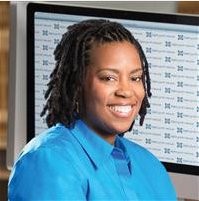 Associate Professor at DePaul University in the College of Computing and Digital Media
Associate Professor at DePaul University in the College of Computing and Digital Media
What Her Current Focus Is: Pinkard is an Associate Professor at DePaul University in the College of Computing and Digital Media. Her research is focused on the design and use of pedagogical-based social networks, new media literacy learning outcomes, ecological models of learning and developing pathways for urban youth. She is a strong advocate for digital literacy and believes that it will lead a revolution in the world of education. This is why she founded the Digital Youth Network in 2006. This Network seeks to help educators learn to teach with technology and digital media. It further seeks to ensure that technology is available to everyone, regardless of their socioeconomic background.
How She’s Transforming the EdTech Space: Pinkard founded the Digital Youth Network (DYN) in 2006, and she has been creating initiatives that transform the edtech space every since. The DYN model begins with sixth to eighth-grade education and focuses on mandatory in-school media arts classes and optional after-school programs. She was also a co-founder of YOUmedia, a public learning space for teens that immerses students in a context of traditional media to produce new media artifacts like games, videos, and virtual worlds. In April 2010, Pinkard co-founded RemixWorld along with Robert Chang. RemixWorld is a cloud-based social learning network for primary and secondary education, which seeks to safely and securely connect children and adolescents with curriculum, extended learning, and mentorship opportunities.
What Her Background Is: Pinkard holds a B.S. in Computer Science from Stanford University, an M.S. in Computer Science from Northwestern University, and a Ph.D. in Learning Sciences from Northwestern University.
What May Surprise You About Her: Nothing. We mean that in a good way.
Twitter: @npinkard
Email: Nichole can be contacted via her website: http://digitalyouthnetwork.org/#our-team
13. Steven Anderson

Co-founder of #EdChat on Twitter, Education Consultant
What His Current Focus Is: Steven Anderson is an educational expert who focuses on the fusion of technology and social media in pedagogy. Anderson is a blogger and a former classroom teacher and district technology director. He hosts the weekly #EdChat on Twitter, which boasts over 1500 participants each week. Anderson’s #EdChats have earned him the Twitterer of the Year distinction twice.
How He’s Transforming the EdTech Space: Anderson works to help teachers meet students in the places where they live: the digital universe. He travels the country, speaking at schools and conferences about how to safely and appropriately integrate social media in classrooms and how to leverage students’ knowledge of technology to help them learn and grow.
What His Background Is: Anderson is a native of North Carolina, where he still currently resides. He earned his bachelor’s degree in Middle-Grade Math and Science Education from Western Carolina University and then obtained a Master’s degree in Instructional Technology from East Carolina University. He was the director of technology at Winston-Salem/Forsyth County Schools in Winston-Salem, NC.
What May Surprise You About Him: Anderson is also the author of 3 books geared toward educators and administrators about efficacy in using technology.
Twitter: @web20classroom
Email: [email protected]
14. Rafranz Davis
 Executive Director of Professional and Digital Learning for Lufkin ISD
Executive Director of Professional and Digital Learning for Lufkin ISD
What Her Current Focus Is: As Executive Director of Professional and Digital Learning, Rafranz helps educators to effectively implement digital learning into their classrooms. She is a speaker, blogger, and an edtech advocate who is never afraid to speak truth to any situation. She is a voice for diverse perspectives in edtech, which have been missing since edtech’s inception. She is the author of The Missing Voices in EdTech: Bringing Diversity into EdTech, a book that puts a spotlight on the fact that the education community has failed to consider the viewpoints of people of color in discussions about edtech.
How She’s Transforming the EdTech Space: By advocating for diverse populations in edtech, she is giving a voice to a population that edtech influencers and policy makers have never acknowledged. Because of her, and people like her, discussions around the intersection of edtech and diversity have increased exponentially. Just visit your favorite edtech blog or read the keynote and presentation titles at your favorite conference. Not to mention, when it comes to the implementation of edtech in an educational environment, Rafranz is a trailblazer.
What Her Background Is: Rafranz obtained an associate’s degree from Navarro College and bachelor’s and master’s degrees from Texas A&M University–Commerce. Since her undergraduate days, she has devoted her life to helping educators implement technology in educational environments. She was a middle school math teacher before becoming a curricular strategist and technologist.
What May Surprise You About Her: Rafranz is never afraid to call a spade a spade.
Twitter: @rafranzdavis
Email: Rafranz can be contacted via her website: http://rafranzdavis.com/

Founder & CEO of Bloomz, Inc.
What His Current Focus Is: Chaks is focused on continuing the fast growth of the Bloomz app, an easy-to-use parent-teacher communication tool for today’s parents, who are used to communicating through their smartphones. Bloomz has a familiar social media interface that encourages parents to participate in their child’s learning and connect with their teacher through a secure platform. With the launch of their school-wide offering, Chaks has also created a powerful premium subscription for school administrators that includes useful data analytics, premium access for all their members, and unlimited membership and storage.
How He’s Transforming the EdTech Space: Chaks has helped bring Bloomz to more than 39,000 schools around the world by combining a social networking experience with a comprehensive set of tools—messaging and media sharing, calendar, signups, and student behavior tracking—in one friendly, easy-to-use app.
What His Background Is: Before creating Bloomz, Chaks applied his computer science and engineering education at companies such as Microsoft, AskMe, and most recently as the vice president of product and partnerships at GlobalScholar, where he focused on building an end-to-end learning platform to connect teachers, students, and administrators. He founded Bloomz, Inc. in January 2014 and serves as the Founder and CEO.
What May Surprise You About Him: Chaks created Bloomz after he and his wife both fell ill and had communication difficulties with his children’s teachers.
Twitter: @achaks
Email: [email protected]
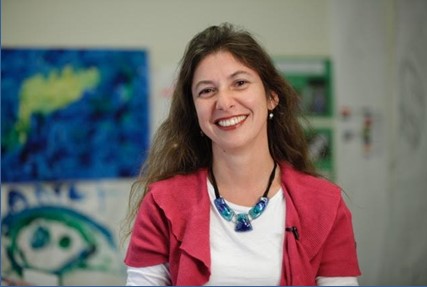 Co-founder and chief scientist at KinderLab Robotics, Inc., and a professor at the Eliot-Pearson Department of Child Study and Human Development and the Computer Science Department at Tufts University, where she directs the DevTech research group.
Co-founder and chief scientist at KinderLab Robotics, Inc., and a professor at the Eliot-Pearson Department of Child Study and Human Development and the Computer Science Department at Tufts University, where she directs the DevTech research group.
What Her Current Focus Is: Dr. Bers is focused on innovative learning technologies to promote positive youth development. Her research focuses on how technology, such as robotics and programming languages, promotes new ways of thinking and learning in early childhood. With Dr. Bers’ approach, introducing computational thinking in early childhood, students learn to be creators and collaborators with technology and with each other. Her most recent book explores coding as a “new language”, and how it can be presented in a playful context, merging STEM/STEAM and coding with social-emotional learning.
How She’s Transforming the EdTech Space: Dr. Bers developed the KIBO robot kit for children 4–7, which is programmed with wooden blocks without keyboards or screens, and is used in 52 countries. She also co-developed the free ScratchJr programming language with over 9.5M downloads.
What Her Background Is: Dr. Bers did her undergraduate at Buenos Aires University, and received a Master’s degree from Boston University and a Master of Science and PhD from the MIT Media Laboratory, where she studied under Dr. Seymour Papert, world-renowned pioneer in developing the first programming language for children, LOGO. She has received prestigious awards, has written four books, and in 2014 did a TEDx talk titled “Young programmers – think playgrounds, not playpens.”
What May Surprise You About Her: Dr. Bers is from Argentina, has three children, speaks four languages, dances tango, and has worked all over the world.
Twitter: @marinabers
Email: [email protected]
17. Vicki Davis

Creator of the Cool Cat Teacher Blog, IT Administrator and Teacher at Westwood Schools
What Her Current Focus Is: Vicki Davis is a current school teacher and blogger. She is also a freelance writer who focuses on professional development for teachers, inspiring them to use technology and build meaningful relationships with their students. Through her blog and her two books, she reaches hundreds of thousands of teachers, inspiring them to share their trials and triumphs and learn from one another, creating a holistic, wholesome environment to foster student achievement.
How She’s Transforming the EdTech Space: Davis’ blog, the Cool Cat Teacher Blog, has garnered much attention and numerous awards, including the Edublogger Award for Best Teacher Blog. Her current project, the global collaborative app project MAD About Mattering, encourages students to create “apps that matter” in collaborative environments, applying the skills and knowledge they learn in the classroom to better the world around them.
What Her Background Is: Davis has been a full-time teacher and IT director at a school in Camilla, Georgia since 2002. She was inspired to begin pursuing professional and teacher development when she began to feel stretched thin – ineffective in the classroom and not as present as she would have liked at home with her children. Two of her children have learning differences, and she began her educational ministry in hopes to better understand students who learn differently like her own children.
What May Surprise You About Her: Davis and her students have traveled all over the world, including to Qatar, India, China, Hawaii, and UAE to present to teachers worldwide about the impact of technology.
Twitter: @coolcatteacher
Email: Vicki can be contacted via her website: http://www.coolcatteacher.com/contact/

Co-founder of #EdChat, Creator of 30 Goals Challenge for Education
What Her Current Focus Is: Shelly Sanchez Terrell is an international speaker and e-learning and digital learning specialist. She has worked with teachers and taught English language learners in over 20 countries. She has also been recognized as one of Microsoft’s Heroes for Education for her work promoting teacher-driven professional development and the integration of technology in the classroom. Terrell offers webinars and online presentations each week to reach out to teachers across the United States and the world.
How She’s Transforming the EdTech Space: Terrell has inspired over 10,000 teachers to transform their classrooms through her 30 Goals Challenge, which guides the teacher to integrate new technology in his or her classroom, avoid the dreaded “teacher burnout,” and reconnect with students. The Goals Challenge helps teachers set both short- and long-term goals to reinvigorate his or her passion for education.
What Her Background Is: Terrell received her Bachelor’s degree in English from the University of Texas at San Antonio, and her Master’s degree in curriculum instruction ESL from the University of Phoenix. She worked as an ESOL teacher and social media community manager before shifting her focus to teacher training and outreach.
What May Surprise You About Her: Terrell has not only taught English to language learners in the United States but has taught abroad in Germany and to online learners in Spain as well.
Twitter: @shellterrell
Email: [email protected]
19. Eric Sheninger
 Award-Winning Former Principal and Author
Award-Winning Former Principal and Author
What His Current Focus Is: Eric is an award-winning former principal who is changing the way that schools think about and also utilize technology. His primary focus is helping schools harness the power of edtech and use it not only to connect with students but also to help them achieve academically. He is an accomplished speaker and author who tweets about all things education.
How He’s Transforming the EdTech Space: Eric is an avid blogger, and his thought-provoking and practical posts shed light on the need for thoughtful technology implementation, more effective learning strategies, and stronger school branding, among other ideas. He is helping schools lead and learn in a digital age. He is responsible for Pillars of Digital Leadership, which is a framework that seeks to transform school cultures.
What His Background Is: Eric is a senior fellow and thought leader on digital leadership with the International Center for Leadership in Education. Before that, he was an award-winning Principal at New Milford High School. Under his helm, the school became a globally recognized model for innovative practices in edtech. Sheninger holds two bachelor’s degrees — a B.S. from Salisbury University and a B.S. from University of Maryland Eastern Shore — and a master’s in education from the East Stroudsburg University of Pennsylvania.
What May Surprise You About Him: Even with his busy schedule, he has found time to write 5 books.
Twitter: @e_sheninger
Email: [email protected]
20. Lucy Gray

Education Consultant, Co-founder of the Global Education Conference
What Her Current Focus Is: Lucy Gray is an educational consultant, Apple Distinguished Educator, and Google Certified Teacher. Gray’s consulting is focused on presenting to teachers and staffs about best practices in technology integration, information literacy, global education initiatives, and harnessing the power of social media. Currently, Gray is working as an innovation coach, mentoring elementary school teachers to explore and create mobile learning opportunities.
How She’s Transforming the EdTech Space: Gray creates hands-on experiences for teachers, coaching them through the process of creating cultures of creativity and innovation in their schools. Instead of simply presenting or lecturing, she dives into schools, meeting regularly with their employees to promote positive change. She also works as a liaison in transitioning schools toward 1:1 technology integration.
What Her Background Is: Gray received her degree in art history and elementary education from Beloit College in 1989, followed by a Master’s degree in technology in education from National-Louis University in 2002. She has taught in the Chicago Public School system, University of Chicago Laboratory Schools, and has worked in various capacities at the University of Chicago.
What May Surprise You About Her: Gray makes all of her consulting presentations available for free on her web page at http://www.lucygrayconsulting.com/presentations.php
Twitter: @elemenous
Email: [email protected]
Conclusion
As you can see, there is no shortage of global edtech influencers out there. Who did we forget? Do you have any edtech influencers who you know and follow? Let us know.
Universities That Are in Danger of Losing Their Accreditation in 2018
The value of your degree is based on the reputation of your university. That status is measured through a standardized system called accreditation.
Much rides on accreditation, from whether or not your university can help you take advantage of federal loans to whether or not your degree will be recognized once you graduate.
Astute college students analyze campus accreditations before selecting a college and while enrolled there.
What is probation and why it’s important
Accreditation probation is a sanction that puts a university on notice that one or more of their programs do not meet quality standards. It serves as a warning to both the college and to the students who must decide if they will remain enrolled in the school or matriculate elsewhere.
These five universities are in danger of losing accreditation in 2018:
- University of Missouri School of Medicine – Due to a lack of diversity, this college may lose accreditation, and students will not be able to sit professional certification exams.
- Fort Valley State University – Failure to meet financial standards for the operations of a university has earned this school an accreditation warning. Failure to make appropriate changes may mean the loss of accreditation within one year.
- University of Texas –RGV – This newly formed university is a merger of UT Pan American University and UT Brownsville, both of which were once accredited. The speed of the merger has accreditation agencies concerned, and the new school has been placed on probation.
- University of Sciences in Philadelphia – The university will likely lose its accreditation in 2018 or early 2019 due to program assessment and administration problems.
- National University of Health Sciences – Placed on notice of possible accreditation loss in 2016, this school must show compliance with all requests no later than December 2017 to retain accreditation.
How significant is a loss of accreditation?
When a university loses accreditation, the school loses credibility not only among other institutions of higher education but also among business who hire graduates.
A college with no accreditation is left with programs of study that no other university will recognize. Other schools will not accept attempts to transfer credits, and students will have to retake courses to graduate.
If students at an unaccredited university choose to stay in their until graduation, they risk earning a degree that employers do not value.
A loss of accreditation is dangerous, not just for universities but also for the students enrolled in their programs.
Districts Need To Set Up Wi-Fi for Students in Public Housing
Students who live in poverty are among the most at-risk students in the public school system. There is extensive research to show that students from low-income families struggle more with behavior and academics for a wide variety of reasons related to poverty. Often, this means that students who come from poverty are left behind in the classroom.
Many students whose families live below the poverty line also don’t have internet access at home. This creates all kinds of problems as well. Students who have access to the internet can go home and get online to work on homework, do research, or just learn about something they’re interested in for fun. Students without the internet may struggle with completing assignments, or feel stuck when they can’t get easy homework help.
As more and more teachers give homework assignments that require internet access, the problems created by the digital divide get bigger. When students are expected to use the internet just to complete their assignments, those students who can’t get online inevitably get left behind.
So what can school districts do to help students whose families can’t afford internet access? One solution is to provide Wi-Fi for these families, free of charge. This sounds ambitious and expensive, but it may be one of the best methods educators have to fight the cycle of poverty.
We already know that there are millions of families with school-age children who don’t have internet access. Almost all of these families lack internet access because they can’t afford it. Additionally, we know that this creates problems for students in school. So why not eliminate these problems completely by simply providing internet access to needy families?
An easy way to target the families who are most likely to be unable to afford internet access would be to give free Wi-Fi to students in public housing. Public housing developments are home to families that live below the poverty line. The government provides assistance with housing for these residents, who must meet certain income requirements.
Providing Wi-Fi to students in public housing is an easy first step for districts looking to close the digital divide. Public housing developments contain a large concentration of low-income students and families, and setting up the infrastructure needed for free internet access would be easiest here.
The benefits of providing free Wi-Fi to students are numerous. Students would be able to complete homework and research on their own time. They would also be able to build crucial digital literacy skills that their peers with easy access to Wi-Fi already have.
Though it may still sound far-fetched, consider the number of school districts successfully implementing similar programs. Kent School District in Kent, WA built kiosks that provide free Wi-Fi for students in public housing, and they’ve had success with students using the kiosks. Families are using the Wi-Fi to check students’ grades and stay in touch with schools, and students are using it to do homework.
Other school districts have tried similar approaches. In California, Coachella Valley Unified School District has put free Wi-Fi on school buses. Students can get online during the ride to or from school. The buses are also parked in trailer parks where many families don’t have internet access. The program has been a huge success, and it’s given internet access to students who need it most.
As internet access becomes more important to students, it’s crucial that districts take the steps necessary to ensure all students can get online. For school districts where students can’t afford Wi-Fi at home, providing it free to those families who need it most may be the only solution that ensures all students have equal access.
Do you think districts should provide Wi-Fi for students in public housing? Let us know what you think schools should be doing to close the digital divide.
Eliminating inequalities needs affirmative action
Richard J. Reddick, University of Texas at Austin; Stacy Hawkins, Rutgers University, and Stella M Flores, New York University
The Supreme Court has upheld the affirmative action admission policy of University of Texas. Abigail Fisher, a white woman, applied to the University of Texas at Austin (UT Austin) in 2008. She sued the university after she was denied admission on the grounds that the university’s race-conscious admissions policy, violated the equal protection clause of the Fourteenth Amendment.
On Thursday, June 23, the Supreme Court ruled that the race-conscious admissions program was constitutional – a decision that the three scholars on our panel welcome. They tell us why existing educational inequalities need considerations of race and ethnicity in admissions.
How else do you eliminate inequality?
Richard J. Reddick is an associate professor in educational administration at University of Texas at Austin.
UT Austin’s history on legal decisions about race in higher education goes back to Sweatt v. Painter (1950), a case that successfully challenged the “separate but equal” doctrine articulated in Plessy v. Ferguson (1898). The landmark case helped pave the way for Brown v. Board of Education (1954), which outlawed racial segregation in education.
The next test, in the Hopwood v. Texas (1996) case, came from the other direction. Cheryl Hopwood was a white applicant who was denied admission. She challenged UT Austin’s use of race in its admissions decisions as unconstitutional. The Fifth Federal Circuit Court of Appeals eliminated the consideration of affirmative action in universities and colleges in Texas. This decision was overruled in 2003.
Fisher, then, was another challenge to the university’s renewed efforts to provide educational opportunity and access to underrepresented students at predominantly white institutions.

Opponents of affirmative action often argue that metrics, such as test scores and class rank, that appear to be neutral, should be the method by which to admit students.
These arguments fail to consider the real impact that racial and socioeconomic discrimination has on educational opportunity. School resources and teacher quality differ significantly, and intangibles such as leadership opportunities often depend on subjective criteria such as teacher recommendations.
Furthermore, many students from underrepresented communities confront challenges in navigating school systems. We additionally know that standardized testing can show bias in certain populations.
In other words, these “neutral” measures actually reinforce social inequities.
The most selective institutions of higher education in the nation no longer rely solely on these metrics. They seek out students with a variety of experiences – factors that may not always correspond to test scores and class ranking.
Today’s ruling is a reassurance, as fleeting as it might be, that the massive task of eliminating educational inequality – which correlates to many other forms of inequality – can be supplemented by approaches in college admissions that consider race and ethnicity.
It does not minimize the importance of eradicating racial discrimination in all walks of life: in the words of UT Austin president Greg Fenves, “race continues to matter in American life.”
However, emphasizing the significance of careful, narrowly tailored approaches to enhancing diversity at predominantly white institutions is a victory for the scholars, researchers, administrators and families who have demonstrated how diversity provides significant educational benefits for all students and American society.
What are the implications for other colleges?
Stacy Hawkins is an associate professor at Rutgers University, where she teaches courses in Employment Law and Diversity in the Law.
The Supreme Court’s decision is cause for both celebration and circumspection.
Justice Anthony Kennedy, the court’s moderate swing justice, whose opinion was rightly predicted to be the key to the decision, undoubtedly shocked many by voting for the first time to uphold a race-conscious admissions policy.
However, the decision is more consistent with Justice Kennedy’s prior decisions, notwithstanding the difference in outcome, than might appear at first blush.
On the one hand, Justice Kennedy reaffirmed his commitment to diversity as a compelling educational interest in 21st-century America (a view he expressed in prior cases on diversity in higher education, as well as in primary and secondary schools).
On the other hand, however, Justice Kennedy also reaffirmed his long-standing belief that, notwithstanding this interest, race may play no more a role than is absolutely necessary to achieve the educational benefits of diversity.
In striking this delicate balance, Justice Kennedy sanctioned the University of Texas’ race-conscious admissions policy today, but gave fair warning that the future of this policy is by no means secure.
More important perhaps than the implications of this decision for the University of Texas is what, if any, implications this decision may have for other colleges and universities?
As Justice Kennedy acknowledged, the University of Texas is unique in its use of race to narrowly supplement a plan that admits the overwhelming majority of students (at least 75 percent) on the sole basis of high school class rank without regard to race, a feature that was critical to Justice Kennedy’s approval of the policy.
Thus, the vast majority of colleges and universities may still be left to wonder about the constitutionality of their own race-conscious admissions policies that operate more widely than Texas’ does.
With a similar case against Harvard University currently winding its way through the federal courts, the answer may not be far off.
Affirmative action bans exist in many states
Stella M. Flores is an associate professor of higher education at the Steinhardt School of Culture, Education, and Human Development at New York University.
Demography, economy and diversity are key issues facing the nation’s colleges and universities and should also be a part of their policy design.
In Fisher v. Texas today, Justice Kennedy’s opinion clearly states two outcomes. The first is that the university’s deliberation that race-neutral programs had not achieved their goals was supported by significant statistical and anecdotal evidence.

The second is that universities have the obligation to periodically reassess their admissions programming using data to ensure that a plan is narrowly tailored so that race plays no greater role than is necessary to meet its compelling interests. This is in essence an accountability mechanism for universities to follow using data and research.
Admissions policies at universities play an important role in the ability to diversify key fields relevant to the nation’s economy, including law, medicine, STEM, education and public policy, so that they can appropriately reflect and serve the unprecedented demographic expansion facing our country.
The decision ensures that pathways to the nation’s most critical educational and employment fields will stay open.
But there are other considerations and realities that include the following. First, some of the nation’s most racially diverse states will still operate under affirmative bans due to state legislation and referenda. These include California, Florida, Michigan, Arizona and Oklahoma.
Second, there is still a clear need for additional effective policies and efforts beyond a consideration of race in college admissions to address the disconnect between the demographics of the nation and its public K-12 schools and who is represented at selective colleges and universities.
Retracting the use of race nationally would have been a step toward increasing racial and ethnic inequality in schools and society. But we’re in a time where race really matters in this country and in how we learn together as a diverse society in our classrooms. This decision reflects this reality.
![]()
Richard J. Reddick, Associate Professor in Educational Administration, University of Texas at Austin; Stacy Hawkins, Associate Professor, Rutgers University, and Stella M Flores, Associate Professor of Higher Education, New York University
This article was originally published on The Conversation. Read the original article.
Students Searching for Universal Data
I love looking at the cellular data network coverage maps showing where your phone will be able to connect to the Internet. Every carrier has their own version, spangled in the company colors so you know who to thank. But in a way, these maps aren’t just advertorial: they show the edge of modern civilization.
After all, mobile data is quickly becoming the new standard for Internet access; smart devices are the preferred platform for everyone from doctors and nurses to college students and presidents. It is like a systemic paraphrasing of The Lion King: “Everything the data map covers is our kingdom.”
The kingdom, in the 21st century, means relevance, engagement, access to knowledge and news, having a voice. For students and schools outside the kingdom, opportunity can seem out of reach.
Needs, Dreams, and Rights
While access to the Internet is by no means a guarantee of outcomes, achievements, or even learning, the absence of this access is effectively punitive for students, teachers, and school.
By Obama’s reckoning, “The Internet is not a luxury, but a necessity,” and key to realizing the modern American Dream. In Canada, a similar spirit informed plans to get every citizen connected to high speed internet, officially designating the service as an essential telecommunications service, thereby affording it greater protections and subjecting it to different regulations. The United Nations went even further with its finding that Internet access constitutes a new human right.
But they weren’t all talking about the same Internet.
Mobile data–the stuff of cellular plans as well as ambitious projects out of Silicon Valley to make coverage maps irrelevant–doesn’t provide the exact same connectivity as dedicated high-speed cable or fiber optic lines. Indeed, the very brands working to make global connectivity a reality would also be gatekeepers choosing which sites, services, and data their users accessed. One may safely assume that free global internet provided by Facebook would send users by default to Facebook as a homepage.
But mobile data is easier and cheaper to push out across greater areas, and to upgrade as the technology improves. This is especially true for poor, rural, or extremely remote regions–those few spots on the map devoid of color and coverage. With branded Internet filling the gaps, the range and type of content users see could well become something akin to a class-based feature.
So even as access itself is championed as the sine qua non of modern living (and schooling), different types of access–to different versions and degrees of the Internet–is further complicating the question of how much data is enough.
What Do We Mean by “Internet” ?
Schools don’t necessarily need access to the full unfiltered Internet anyway.
Nearly one quarter of all mobile searches is for porn, and some 90 percent of teenagers today will encounter some form of porn online before they reach adulthood. That is hardly part of the academic mission schools pursue by securing Internet access. But “porn” itself, not unlike “literally,” has undergone a change of definition in the Internet era away from its original, specific meaning to a term of emphasis or hyperbole.
Social media has popularized various hobbies and interest groups as pornography–just search Instagram for “food porn” and take an the epicurean journey around the world; or, to satisfy your wanderlust, find any of the hundreds of “travel porn” blogs to witness entirely lust-free accounts of vacations, road trips, and cruises. And just as each subgroup has its own, personalized version of “porn,” the world has been steadily realigning itself online into isolated pockets of alternative facts.
Long before Kellyanne Conway used the term, politicos and casual browsers alike self-sorted into ideological bubble communities, where challenging ideas and interpretations of science itself were cut off from one another. To go online today is to choose a camp and stay there, insulated from contradiction or contest.
Porn isn’t porn, facts aren’t facts, the Internet isn’t the Internet, and literally is now figurative–so is data really access?
The next shift in what the Internet itself really is may hold answers.
Data, Things, and People
Were Yakov Smirnoff to apply his classic Russian Reversal joke to today’s online culture, he might say, “In Soviet Russia, the Internet uses you!” Except he wouldn’t be wrong–and this role reversal isn’t limited to one place.
The Internet of Things is already making itself known around the world. Rather than users navigating the Internet through user-friendly browsers and screen-based interfaces, smart devices are taking responsibility for creating, exchanging, and accessing information. Wearables ranging from step-tracking fitness bracelets to implantable heart monitors are gaining in both popularity and functionality. In the classroom, silent monitoring systems gauge engagement, performance, and comprehension to automatically alert teachers to individual student needs and opportunities–or simply adjust tests and assignments responsively on their behalf.
In short, people don’t just use passive technology–the technology is active, autonomous, and capable of “making” its own Internet, sharing data among a network of devices, rather than between human users. In the Internet of Things, the devices do in fact use us.
Before universal Internet access even became a reality, the nature of the Internet, and data, and access have all been thrown into confusion. More critical thinking than ever is needed to navigate the world’s online troves of knowledge, in order to distinguish fact from opinion, reliable from unreliable sources, even real people from chat bots.
For all the importance we’ve come to place on getting schools and students connected, the most important skills of all remain social, interpersonal, and based in the real, rather than digital, world. Internet access remains a worthy goal, but equally important is ensuring that future generations of students and their instructors are equipped to navigate the web, given the opportunity.

